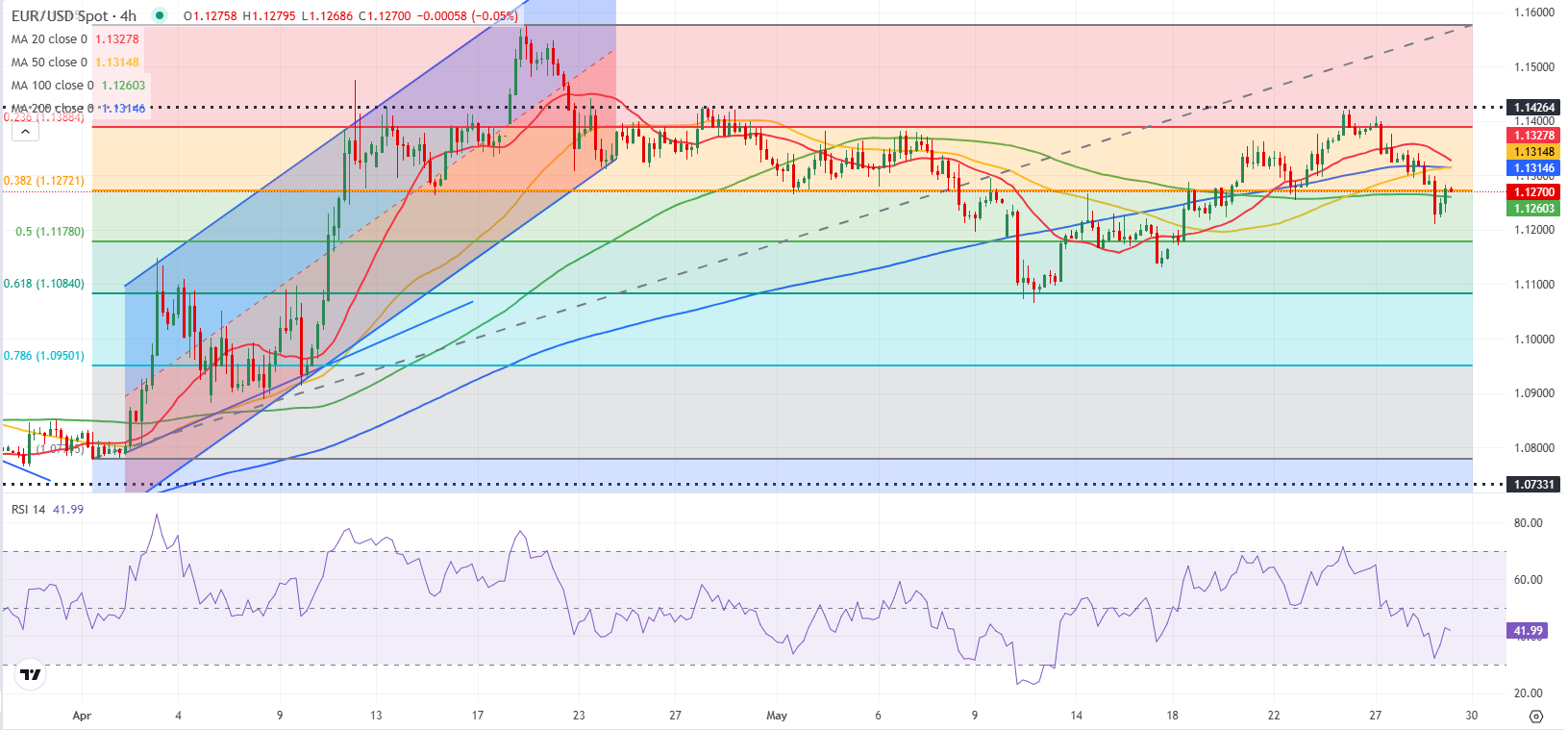- EUR/USD recovers toward 1.1300 after falling sharply in the Asian session on Thursday.
- Risk flows return to markets after a federal court blocked US President Trump’s reciprocal tariffs.
- The US economic calendar will feature mid-tier macroeconomic data releases.
EUR/USD came under renewed selling pressure and dropped to its weakest level in over a week near 1.1200 in the Asian session on Thursday. Although the pair erased a large portion of its daily losses, it could have a difficult time extending its rebound in the second half of the day.
Euro PRICE This week
The table below shows the percentage change of Euro (EUR) against listed major currencies this week. Euro was the weakest against the US Dollar.
| USD | EUR | GBP | JPY | CAD | AUD | NZD | CHF | |
|---|---|---|---|---|---|---|---|---|
| USD | 0.87% | 0.46% | 1.98% | 0.67% | 0.75% | 0.39% | 1.14% | |
| EUR | -0.87% | -0.41% | 1.15% | -0.21% | -0.12% | -0.48% | 0.27% | |
| GBP | -0.46% | 0.41% | 1.21% | 0.21% | 0.29% | -0.06% | 0.70% | |
| JPY | -1.98% | -1.15% | -1.21% | -1.30% | -1.22% | -1.61% | -0.83% | |
| CAD | -0.67% | 0.21% | -0.21% | 1.30% | 0.11% | -0.27% | 0.49% | |
| AUD | -0.75% | 0.12% | -0.29% | 1.22% | -0.11% | -0.40% | 0.41% | |
| NZD | -0.39% | 0.48% | 0.06% | 1.61% | 0.27% | 0.40% | 0.76% | |
| CHF | -1.14% | -0.27% | -0.70% | 0.83% | -0.49% | -0.41% | -0.76% |
The heat map shows percentage changes of major currencies against each other. The base currency is picked from the left column, while the quote currency is picked from the top row. For example, if you pick the Euro from the left column and move along the horizontal line to the US Dollar, the percentage change displayed in the box will represent EUR (base)/USD (quote).
The US Dollar (USD) gathered strength in the late American session on Wednesday and continued to outperform its rivals early Thursday on easing fears over United States (US) President Donald Trump’s trade policy causing an economic downturn.
The Court of International Trade announced late Wednesday that President Trump’s reciprocal tariffs will be blocked from going into effect, explaining that Trump overstepped his authority by imposing across-the-board duties on imports from the US’ trading partners, per Reuters. The USD Index, which tracks the USD’s valuation against a basket of six major currencies, shot higher with the immediate reaction to this development. Meanwhile, US stock index futures gathered bullish momentum and were last seen rising between 1.4% and 2.1%.
The US Bureau of Economic Analysis will release its second estimate of the annualized Gross Domestic Product (GDP) growth for the first quarter later in the day. A positive revision to the initial estimate, which showed a contraction of 0.3%, could help the USD hold its ground and cause EUR/USD to turn south. Additionally, weekly Initial Jobless Claims will be featured in the US economic calendar.
In case Wall Street’s main indexes rally after the opening bell on improving sentiment around the US economic outlook, investors are likely to refrain from betting on an extended rebound in EUR/USD.
EUR/USD Technical Analysis

The Relative Strength Index (RSI) indicator on the 4-hour chart stays slightly above 40 after recovering from near-30, suggesting that the bearish bias remains intact.
EUR/USD faces a pivot level at 1.1270, where the 100-period Simple Moving Average (SMA) and the Fibonacci 38.2% retracement of the latest uptrend align. In case the pair fails to stabilize above this level, technical sellers could remain interested. In this scenario, 1.1180 (Fibonacci 50% retracement) could be seen as the next support level before 1.1080 (Fibonacci 61.8% retracement).
On the upside, 1.1315 (200-period SMA) could be seen as the next resistance level ahead of 1.1380 (Fibonacci 23.6% retracement) and 1.1430 (static level).
Tariffs FAQs
Tariffs are customs duties levied on certain merchandise imports or a category of products. Tariffs are designed to help local producers and manufacturers be more competitive in the market by providing a price advantage over similar goods that can be imported. Tariffs are widely used as tools of protectionism, along with trade barriers and import quotas.
Although tariffs and taxes both generate government revenue to fund public goods and services, they have several distinctions. Tariffs are prepaid at the port of entry, while taxes are paid at the time of purchase. Taxes are imposed on individual taxpayers and businesses, while tariffs are paid by importers.
There are two schools of thought among economists regarding the usage of tariffs. While some argue that tariffs are necessary to protect domestic industries and address trade imbalances, others see them as a harmful tool that could potentially drive prices higher over the long term and lead to a damaging trade war by encouraging tit-for-tat tariffs.
During the run-up to the presidential election in November 2024, Donald Trump made it clear that he intends to use tariffs to support the US economy and American producers. In 2024, Mexico, China and Canada accounted for 42% of total US imports. In this period, Mexico stood out as the top exporter with $466.6 billion, according to the US Census Bureau. Hence, Trump wants to focus on these three nations when imposing tariffs. He also plans to use the revenue generated through tariffs to lower personal income taxes.

